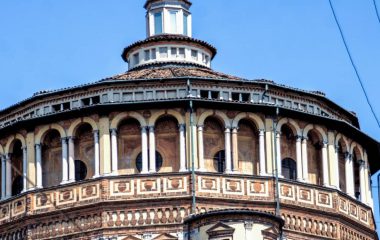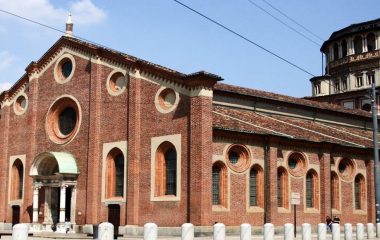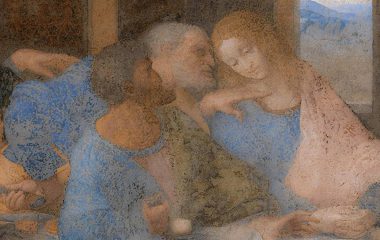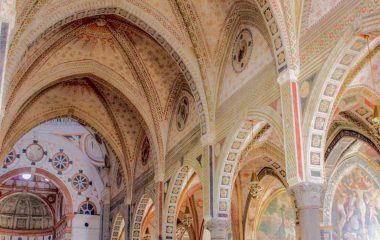How many times have you visited the Last Supper? Once, often or never? Have you ever gone into the Basilica of Santa Maria delle Grazie to discover the history, strange facts and anecdotes about fifteenth-century Milan? Wouldn’t a guided tour be better? The legend came back into the limelight after Dan Brown mentioned da Vinci’s work in his novel “The Da Vinci Code” as proof of the fact that Leonardo wanted to send us a secret message. Apart from the literary fiction, the Last Supper opens up a series of interesting questions, starting from its preservation and how it was recently restored. This restoration of the Last Supper made it much brighter and “barer” than it had previously been. To see it at its best and in full, the reproduction above, which is the only one of The Last Supper in its natural scale and in the central hall of the head office of the Banca Popolare di Milano in Piazza Meda, is more useful.
The most famous work by Leonardo da Vinci in the world is in Milan and is considered the pride of the city by many of our professional guides as well as being a real revolution in the history of art! This absolute masterpiece of Western art, which has been reproduced countless times on different supports and with different techniques (even chocolate syrup!), runs the risk of no longer being really read by the eye of contemporary man. This eye is blasé and has now also been used to moving images, in high resolution and in 3D for some time now.
In order to be able to understand and really appreciate the revolutionary importance of The Last Supper with our guided tour, we try to see it again through “virgin” eyes, the eyes of the 15th century man.
Hypotheses and interpretations about the Last Supper
The Last Supper is a key moment in the Gospel story, because it describes the establishment of the sacrament on which Christianity itself is based: the Eucharist. The episode was thus shown by artists from the early centuries of Christianity and can boast of a long iconographic tradition. The layout of the scene, the arrangement of the figures, their gestures and characteristics, some details of the table etc. faithfully follow the narration of the Gospels and have been codified by centuries of representations.
How does Leonardo da Vinci read and interpret the Gospel story? Which iconographic models does he take as reference? What does he adopt from tradition and what does he alter or renew? Above all, how and why does he introduce certain variants? Does the apostle on the right of Christ really have female features? Did Leonardo want to portray Mary Magdalene or not?
In short, what was Leonardo da Vinci’s aim in painting The Last Supper in the refectory of the Basilica of Santa Maria delle Grazie?







